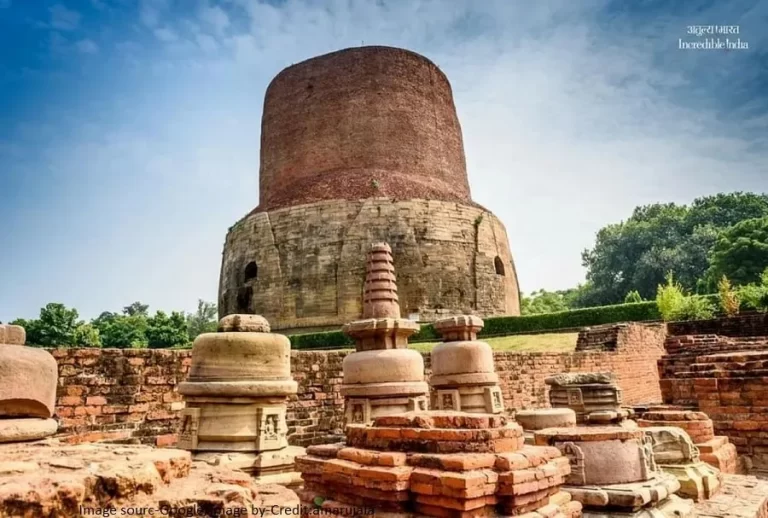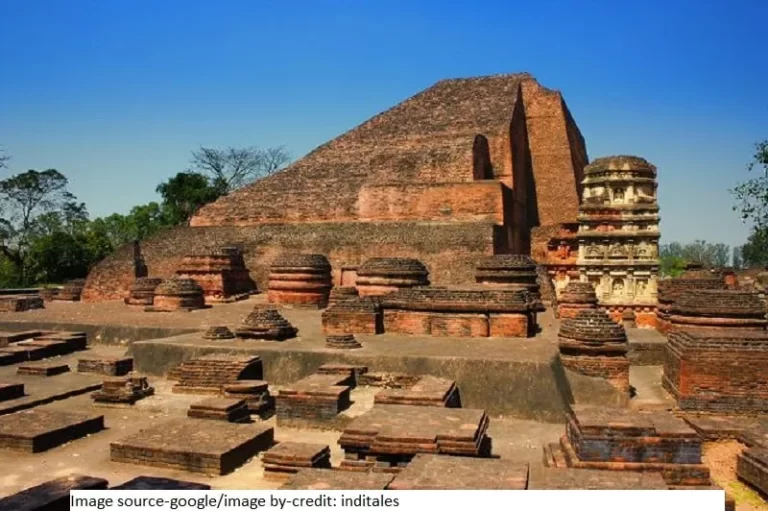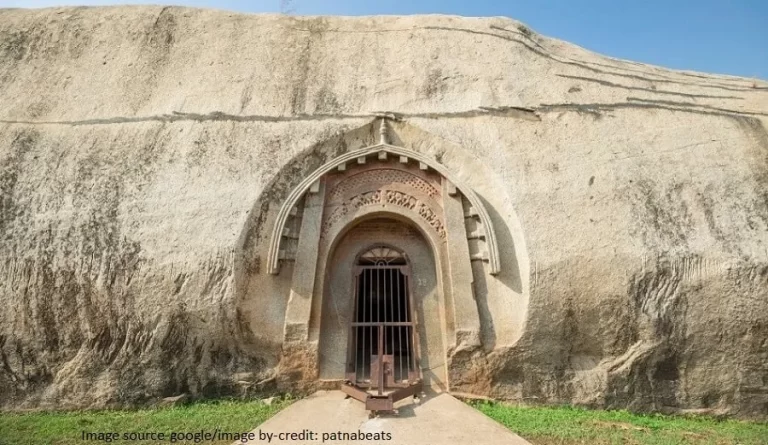The history of Buddhism is knotted with India. And why not? Our country is the birthplace of Lord Gautam Buddha, the founding father of Buddhism. Buddhism gained prominence in India during the reign of Emperor Ashoka.
Many sites for propagating the religion were engineered throughout his power. No wonder India is home to several prominent structures portaging Buddhist architecture at its best.
Table of Contents
ToggleBuddhist Architecture in India
Deeply rooted within Indian soil, Buddhist architecture is the birthplace of Buddha’s teachings. This form of design began with the development of various symbols representing completely different aspects of Lord Buddha’s life. It was the Indian Emperor Ashoka who established Buddhism as the religion of his state (Magadh Empire). He conjointly constructed completely different monuments to unfold Buddhism across the country.
Three distinguished Architectural types primarily picture Buddhist design:
- The Chaitya Hall (Place Of Worship)
- The Vihara (Monastery)
- The Stupa (Hemispherical Mound for Worship/Memory)
Buddhist Architecture – 5 Classic Examples
1. Bodh Gaya, Bihar
It wouldn’t be wrong to say; that Bodh Gaya is the center of Buddhism in India. This religious site is connected with the Mahabodhi Temple Complex within the state of Bihar, Gaya. One of the crucial reasons contributing to this place’s incredible popularity is that it’s where Gautama Buddha is alleged to achieve Enlightenment (Pali: bodhi) under the standard Bodhi Tree. The Mahabodhi Temple, situated in Bodh Gaya, was declared a UNESCO World Heritage site in 2002.
Bodh Gaya is regarded as the holiest site in Buddhism. Referred to as Uruwela in the Buddha’s time, it is located by the bank of the Lilajan River. King Ashoka constructed the debut temple at the site.
Buddha was born in 563 BC on the subsequent auspicious BaisakhiPurnima. As Siddhartha, he renounced his family at the age of 29 in 534 BC and meditated in search of truth. After active self-abasement for six years at Urubela (Buddhagaya) in Gaya, Gautama gave up that practice as it did not offer him Vimukthi. Then he discovered the Noble Eightfold path without help from anyone and practiced it. Then he earned Buddhatva, or enlightenment. Enlightenment is a state of being entirely free from lust(raga), hatred (dosa), and delusion (moha). By gaining enlightenment, you enter Nirvana, during which the ultimate stage is Parinirvana.
Since the ancient era, this Buddhist architecture wonder has remained the object of pilgrimage and reverence for Buddhists and Hindus.

2. Sarnath, Uttar Pradesh
Sarnath is situated 10 kilometers from the holy city of Varanasi, close to the union of the rivers the Ganges River and Varuna, Uttar Pradesh, India. What makes this place famous? Well, the Sarnath deer park is where Gautam Buddha first preached the Dharma. It is also considered the place where the Buddhist Sangha came into existence through the enlightenment of Kondanna.
Singhpur, a village approximately one kilometer from Sarnath, was the birthplace of Shreyansanath, the Eleventh Tirthankara of Jainism. A temple dedicated to him is an important pilgrimage site.
Also cited as Isipatana, Buddha mentions this city as one of the four places of pilgrimage his devout followers ought to visit. It was also the site of the Buddha’s DhammacakkappavattanaSutta, his first sermon after attaining enlightenment, in which he explained the four noble truths and the teachings related to them.
Sarnath is one of our country’s four sacred Buddhist places, with astounding structures like Dhamekh Stupa and Chaukhandi Stupa that celebrate its historical significance.

3. Kushinagar, Uttar Pradesh
Buddhists believe that Lord Buddha attained the top stage of salvation (Parinirvana) during this community in Uttar Pradesh – following his death. Kushinagar is one of the four most sacred places for Buddhists. At the age of 81, Lord Buddha died in this small city. This site is additionally renowned as Buddha imparted his last lessons here; it is in Kushinagar where he said
“All things should pass. Decay is inherent in all things.”
The area houses the very talked-about Rambhar Stupa and, therefore, the Mahaparinirvana temple that holds the world-popular sculpture of Buddha in a reclining position.

4. Nalanda, Bihar
Nalanda has a great history dating back to the sixth century in the times of Gautam Buddha and Lord Mahavir. Even nowadays, it is undoubtedly a splendid site of culture and learning. The notable Nalanda University was founded long back in the fifth century B.C… It was a well-liked center of learning within the region.
Nalanda is additionally one of the UNESCO World Heritage sites. It is also one of India’s most primitive universities, and even today, it remains one famous historical places in india.

5. Barabar Caves, Bihar
These Buddhist cave temples are among the first-born rock-cut caves still in India. Dating back to the third century B.C.E., these caves are set within the state of Gaya, Bihar. For generations, Barabar caves were utilized by Buddhists and Jains.
These caves are located in the twin hills of Barabar (four shelters) and Nagarjuna (three caves); caves of the 1.6 km (0.99 mi)-distant Nagarjuna Hill are typically singled out as the Nagarjuna Caves.
These rock-cut chambers bear dedicatory inscriptions in the name of “King Piyadasi” for the Barabar cluster and “Devanampiya Dasaratha” for the Nagarjuna group, thought to date back to the third century B.C.E. throughout the Maurya period, and to correspond respectively to Ashoka (reigned 273–232 BCE) and his grandchild, Dasharatha Maurya.
Most caves at Barabar include two chambers carved entirely out of granite, with a highly polished internal surface, the “Mauryan polish” also found on sculptures and exciting echo effects.
Including four significant caves, Karan Chaupar, Sudama, Lomas Rishi Caves, and VisvaZopri, every shelter is decorated with detailed sculptures and inscriptions. India has rather much more to offer anyone curious to understand Buddhist architecture. The list does not end from ancient Buddhist cave temples to giant statues of Gautama – The list does not end.

Conclusion
Distinctive Buddhist architecture and sculptures like, Stupas, Pagodas, caves, and monasteries are mere spectators of different eras of the Buddhist period and speech concerning the various phases. Being the religious symbols of Buddhism, these structures are not just simply monastic or holy places but even function as a sacred land that has the facility to purify one’s soul.
